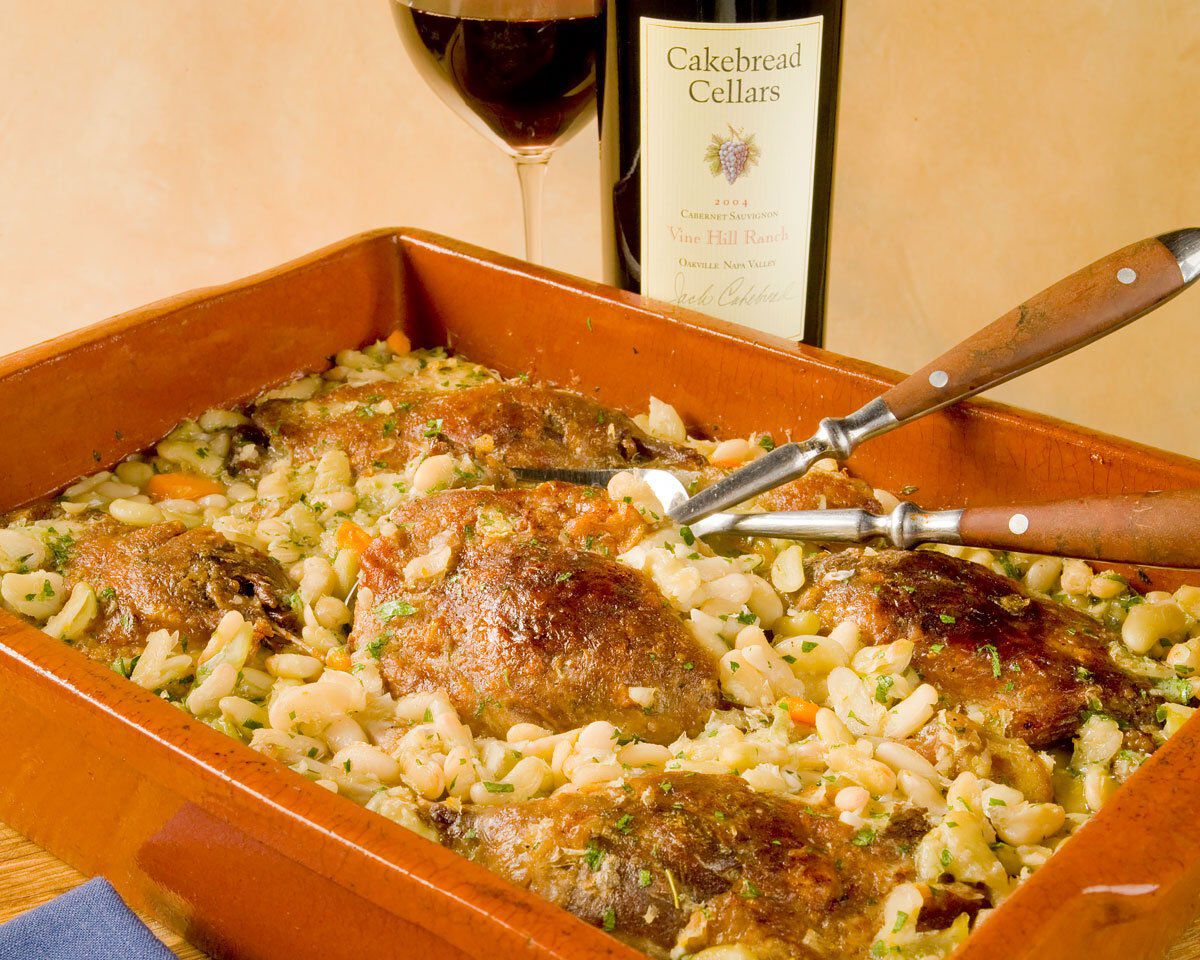Preparation
Trim the duck legs of any excess fat and place in a colander. Mix together all the ingredients for the curing salt and evenly season the duck on both sides. Toss with the garlic, rosemary and bay leaves. Set a bowl under the colander and cover with plastic wrap. Refrigerate overnight.
The next day, remove the duck legs from the refrigerator and allow them to come to room temperature. Preheat the oven to 300ºF. Discard the herbs. Place the duck legs skin side up in a heavy deep, wide-bottom pan or casserole dish. Add the garlic cloves to the pan. Heat the duck fat up in a separate pan to melt. Pour enough of the fat over the legs to completely submerge. Transfer the pan to the middle of the oven. Cook for two to two and a half hours making sure that the duck fat doesn’t rise above a gentle simmer, until duck is tender but before it starts falling off the bone. Remove from the oven and allow to cool in the fat. The type of duck you use will determine the length of cooking. Peking duck legs are smaller and will cook a little faster than the other two common varieties, Moulard and Muscovy.
Once cool, remove duck to a small container that you can store the legs in. Strain the fat through a fine mesh strainer and pour over the top to cover. Cover with plastic wrap and refrigerate. Confit is best if allowed to sit for a week before being served and can be successfully stored for several months.
To serve, remove confit from the refrigerator and set in a warm place so that the duck fat softens. Remove all or as many of the legs that you wish to serve. Scrape off as much of the fat as you can. Heat a skillet up over high heat. Add a tablespoon of the duck fat and place the legs in the pan skin side down. Brown on both sides and serve with red wine braised cabbage or over a salad of fall lettuces.






